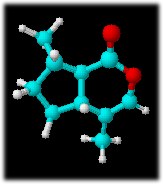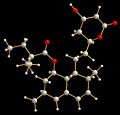Astronomers working under the proverbial umbrella of the International Astronomical Union (IAU), have come up with a new definition of “planets” and smaller “solar system bodies” such as comets and asteroids, this week, but the definition is not without controversy.
If the definition is approved by the astronomers who are pointing their telescopes at each other at the IAU General Assembly in Prague, this week, then our Solar System will have 12 not nine planets, with more to come.
Our heavenly neighbours will be the eight classical planets that dominate the system, including Pluto, whose status hung in the balance for a while. But, there will be an additional three planets in the new burgeoning category of “plutons” described as Pluto-like objects — and Ceres. Pluto will at the time of writing remain a planet but be the prototype for the new category of “plutons.” Anything smaller than Pluto but with similar properties, presumably, will become a pluton rather than a planet.
With the advent of powerful new telescopes on the ground and in space, planetary astronomy has gone though an exciting development over the past decade. For thousands of years very little was known about the planets other than they were objects that moved in the sky with respect to the background of fixed stars. In fact the word “planet” comes from the Greek word for “wanderer”. But today hosts of newly discovered large objects in the outer regions of our Solar System present a challenge to our historically based definition of a “planet”.
The new definition accommodates the eight bodies from Mercury to Neptune and Pluto because they orbit a star and aare in “hydrostatic equilibrium,” which basically means they’re “almost round.”
Not everyone is happy with the new definition. Caltech’s Mike Brown co-discoverer of UB313 (aka Xena) is appalled by the notion that there could be many more than the “special” nine planets orbiting our sun. Estimates put the figure at 53 round objects are already known.
He told the Globe and Mail, that ‘To me, the word ‘planet’ always meant something special. Nine was special. Maybe 10. Fifty-three? No,…in some ways it drains the excitement of what I thought was an exciting find. Turns out it was the 12th planet. Who knew?’
Moreover, a counter definition that knocks Pluto off the list altogether is being mooted by rebel astronomers at the same meeting, according to New Scientist. This version tacks on the idea that to be a planet the object must be the dominant heavenly body in its orbital region. Unfortunately for Pluto, Neptune (not to mention Uranus) is much bigger and their orbits cross…so Pluto would, according to The Register, be planet-ish but not quite planetary.
Final voting will take place Thursday.
But, never mind the astronomers’ concerns, what are astrologers making of all this? Surely, their charts will all have to be redrawn if Xena is in the ascendent and Pluto on the decline! Maybe in the Age of Aquarius we shouldn’t be worrying about such trivia as planetary definitions and get back to solving other more pressing matters here on earth.



